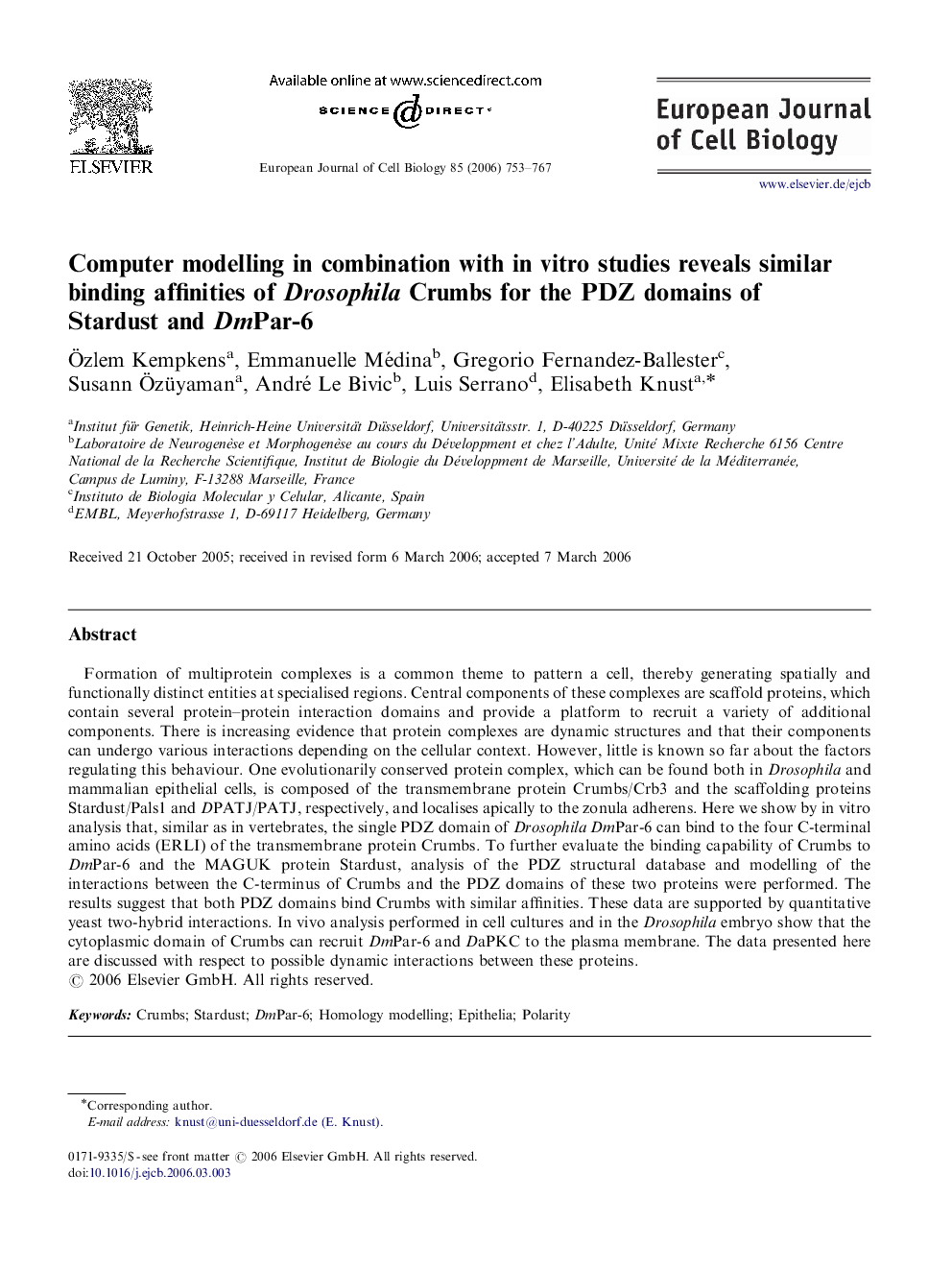| کد مقاله | کد نشریه | سال انتشار | مقاله انگلیسی | نسخه تمام متن |
|---|---|---|---|---|
| 2179275 | 1549771 | 2006 | 15 صفحه PDF | دانلود رایگان |

Formation of multiprotein complexes is a common theme to pattern a cell, thereby generating spatially and functionally distinct entities at specialised regions. Central components of these complexes are scaffold proteins, which contain several protein–protein interaction domains and provide a platform to recruit a variety of additional components. There is increasing evidence that protein complexes are dynamic structures and that their components can undergo various interactions depending on the cellular context. However, little is known so far about the factors regulating this behaviour. One evolutionarily conserved protein complex, which can be found both in Drosophila and mammalian epithelial cells, is composed of the transmembrane protein Crumbs/Crb3 and the scaffolding proteins Stardust/Pals1 and DPATJ/PATJ, respectively, and localises apically to the zonula adherens. Here we show by in vitro analysis that, similar as in vertebrates, the single PDZ domain of Drosophila DmPar-6 can bind to the four C-terminal amino acids (ERLI) of the transmembrane protein Crumbs. To further evaluate the binding capability of Crumbs to DmPar-6 and the MAGUK protein Stardust, analysis of the PDZ structural database and modelling of the interactions between the C-terminus of Crumbs and the PDZ domains of these two proteins were performed. The results suggest that both PDZ domains bind Crumbs with similar affinities. These data are supported by quantitative yeast two-hybrid interactions. In vivo analysis performed in cell cultures and in the Drosophila embryo show that the cytoplasmic domain of Crumbs can recruit DmPar-6 and DaPKC to the plasma membrane. The data presented here are discussed with respect to possible dynamic interactions between these proteins.
Journal: European Journal of Cell Biology - Volume 85, Issue 8, 3 August 2006, Pages 753–767